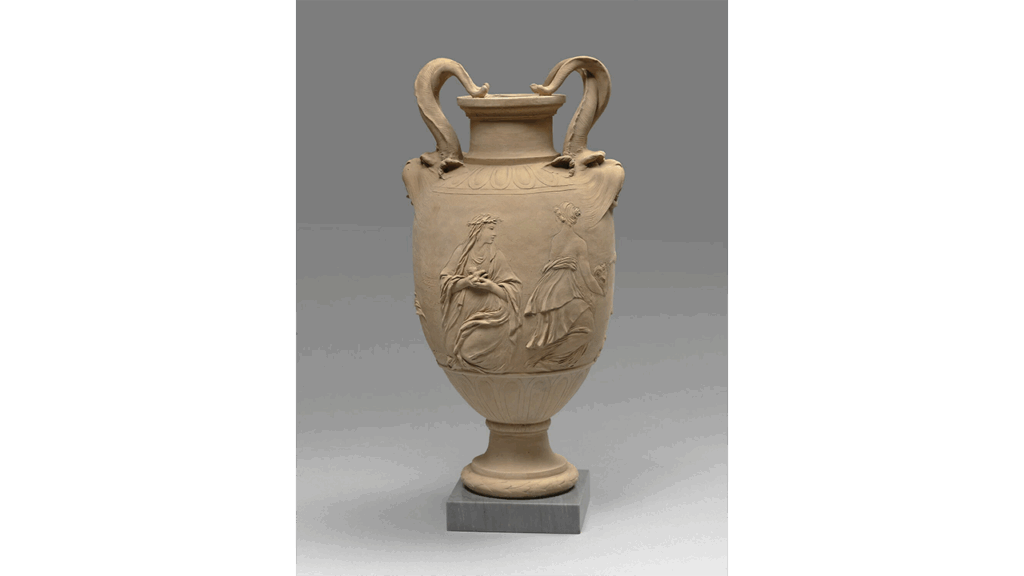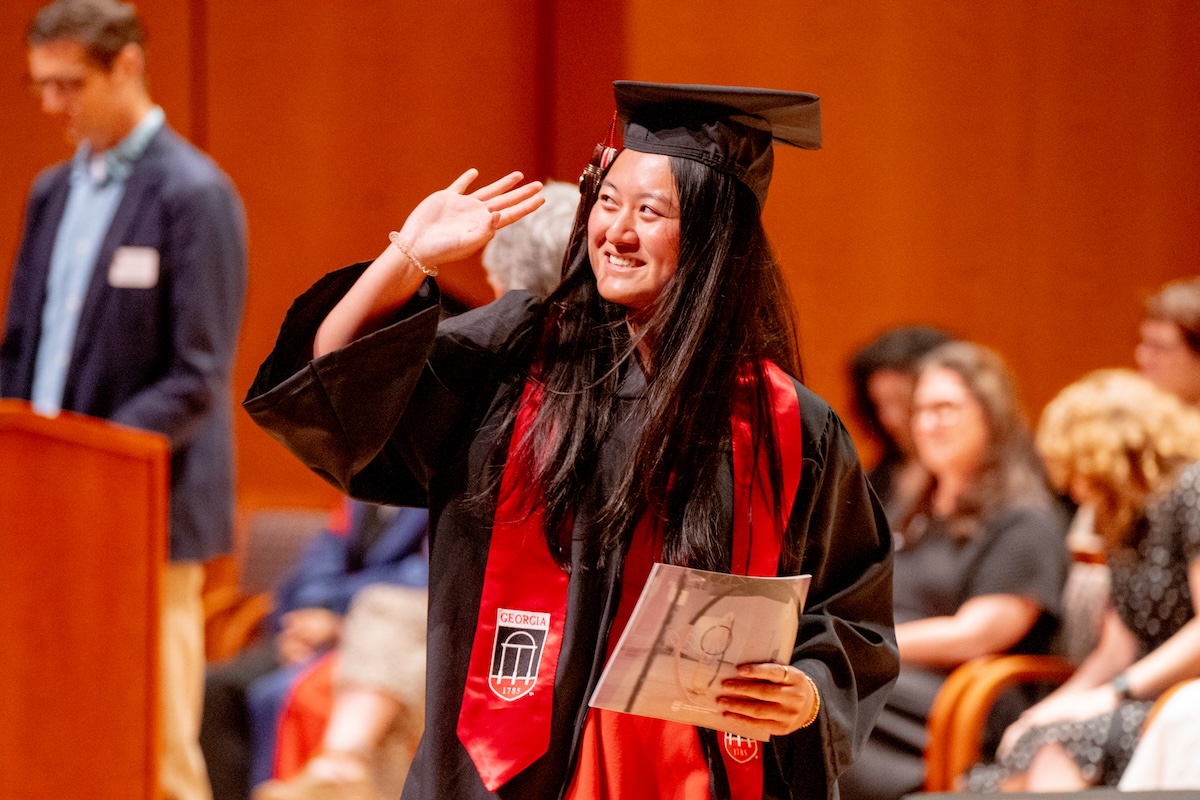Art History Faculty Lecture | Elizabeth Browne
March 12th, 2024 at 5:00 pm

Date & Time
March 12th, 2024 at 5:00 pm
– November 12th, 2024 at 7:00 pm
Location
Lamar Dodd School of Art | N100
Type of Event
Faculty Research Lecture Series
Academic Area
Art History
Image: Claude Michel, called Clodion (1738-1814), Vase avec décor de cinq femmes faisant un sacrifice (Vase with Five Women Making a Sacrifice), 1766. Terracotta, 38.6 cm. Paris, Musée du Louvre
Assistant Professor of Art History Elizabeth Browne will present the lecture “Clodion’s Clay Vases and the Origins of Art.”
Lecture Abstract
In his influential History of the Art of Antiquity (1764), the German antiquarian Johann Joachim Winckelmann proclaimed that ‘Art and sculpture began with clay.’ According to Winckelmann, clay was initially employed for utility (vessels for storing food, oil, and wine) and then for figurative works. Despite its importance to art’s origins, however, in Winckelmann’s account, clay—and specifically earthen clay, as opposed to refined porcelain—remained associated with vases, idols, and artists’ models, unable to ‘progress’ to the Sculptural Ideal embodied by ancient Greek marble statuary. Contemporary scholarship has largely followed this assessment, casting clay as a preparatory medium for more ‘noble’ works in bronze or marble, or merely as used for decorative objects, often beyond the purview of the ‘fine arts’ and of serious study.
Yet, terracotta (earthen clay that has been ‘cooked,’ or fired) was a popular medium in eighteenth-century France: ancient and modern examples from around the globe appealed to connoisseurs, artists, and amateurs, and they populated the mantels, consoles, and brackets of the eighteenth-century interior. No contemporary artist was better known for terracottas than Claude Michel, called Clodion (1738-1814), for whom the vase—that form associated with art’s beginnings—occupied a significant place in his oeuvre. Beginning in the 1760s during his time as a pensioner of the French Academy in Rome, Clodion produced vases for the private cabinets of collectors, and he included vases as motifs in his bas-reliefs and as modeled elements of his figurative terracottas. Rather than a simple ‘neoclassicism’ or an appeal to a taste for sketches as is traditionally argued, I contend that Clodion’s terracotta vases reflect on the material nature of clay and on the origins of art, those associations to which Winckelmann had gestured and dismissed. In the context of contemporary materialist philosophy, their elemental materiality (clay as earthen minerals and water, transformed by fire and air) confounded raw nature and art; in regards to debates on the primacy of artistic practices, clay’s plasticity muddled the boundaries of painting and sculpture, with proportions of the vase also incorporating architecture; the impressionability of the material left traces of the artist’s presence, further identifying the vase as a font, one of creativity and invention; and finally, the depiction in their bas-reliefs of the pagan uses of vessels in worship commented on the development of the vase from an object of ancient religious ritual to one of contemporary connoisseurial attention. By considering together the form and subject of Clodion’s clay vases, alongside the mythologies and materiality of the earthen matter they foreground, this paper argues that Clodion’s clay vases assert the integrity of terracotta as enduring from antiquity, and insist that something as old and ubiquitous as clay could express—perhaps even more so than marble statuary—sculptural modernity in eighteenth-century France.


